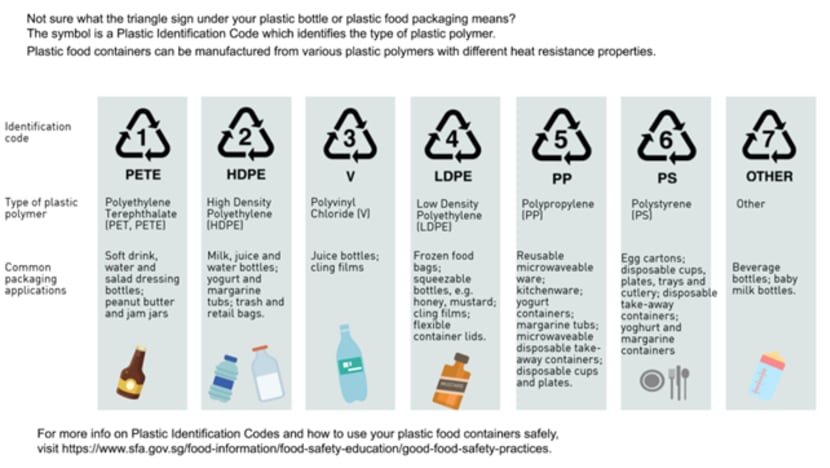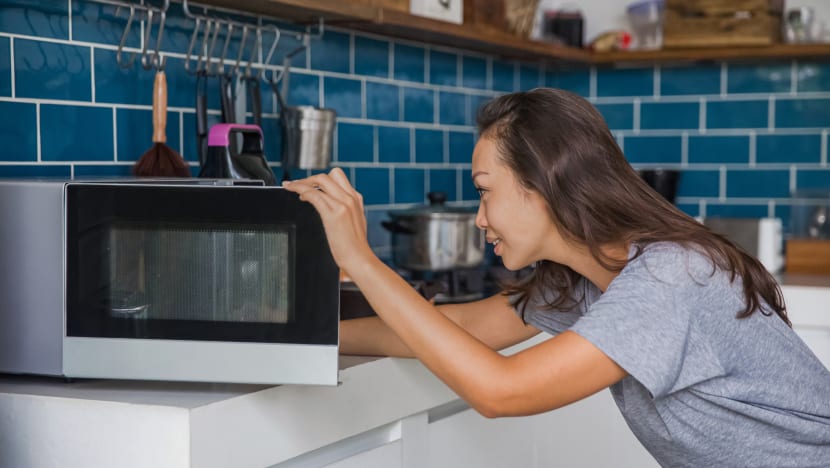7 things to know about using disposable plastic containers, for piping hot food or otherwise
Takeaways have been a lifeline for hawkers and other food and beverage businesses amid the COVID-19 pandemic, especially when dining out was banned.
The “dabao” (takeaway) culture was alive and well in Singapore, however, even before the pandemic.
And much as the authorities and zero-waste advocates have called on consumers to bring their own reusable containers when visiting their favourite food stalls, most people find it more convenient to use the single-use containers provided by the businesses.
But what exactly are these containers made of, are they suited for all kinds of food and is it safe to reuse them? CNA Insider’s Talking Point web original series seeks answers from pharmacologist and toxicologist Henry Leung.
1. WHAT’S IN MY CONTAINER?
Disposable food containers are generally made of plastic resins mixed with some additives, said Leung. Additives are chemical substances that could improve the performance of the plastic by, for example, making it more flexible, or improve its physical appearance.
“Some of these additives are added if the disposable box is designed to hold high-temperature food,” added the senior lecturer at Nanyang Polytechnic’s School of Chemical and Life Sciences.
As for the container’s main ingredient, the resin identification code at the bottom of some containers — in the middle of the recycling logo — lets you know what type of plastic it is. Here is what the numbers mean:
- Code 1: Polyethylene terephthalate (PET)
- Code 2: High-density polyethylene (HDPE)
- Code 3: Polyvinyl chloride (PVC)
- Code 4: Low-density polyethylene (LDPE)
- Code 5: Polypropylene (PP)
- Code 6: Polystyrene (PS)
- Code 7: Polycarbonate (PC) and other plastics

2. WHICH TYPE OF PLASTIC IS THE SAFEST?
It depends on what the container is being used for, such as hot food or food to be microwaved. Consumers should choose the correct plastic for their intended use, and this applies to reusable containers too, advised Leung.
“If your container is (going to be) consistently heated, you might want to look at a heat-resistant, reusable plastic container,” he said. Polypropylene (Code 5), for example, is the most suitable for microwaving because of its resistance to heat.
There are also containers designed to be put in the fridge and freezer, such as high-density polyethylene (Code 2).
“(In contrast), some … disposable plastic containers, (if) put in the freezer, will very likely crack because they’re not designed to work at extreme temperatures,” Leung added.
3. IS IT SAFE TO USE DISPOSABLE CONTAINERS FOR PIPING HOT SOUP?
If hot soup is poured into a container that is not made for such high temperatures, the plastic will deform immediately, said Leung.
Containers that are safe for the microwave would feature the label but may also include instructions to remove the cover first.

4. CAN I REUSE DISPOSABLE CONTAINERS?
They are recommended for one-time use. “They are safe for their immediate intended purpose but not beyond what they are designed for,” the Singapore Food Agency (SFA) states on its website.
If you must reuse disposable plastics, then a “like-for-like” approach is important, said Leung. This means refilling a container of bottled water with water instead of, say, coffee.
He also reminds his friends and colleagues to look out for telltale signs that they should stop using a container.
Discolouration in a particular area could mean it was overheated. After repeated use, the takeaway container’s texture could change and become harder or softer. “These are signs that it has gone beyond the limits of the plastic formulations,” said Leung.
“If you ignore all these signs and continue using the plastic container, you’d be taking the risk of accumulating more of these chemicals than you’re exposed to normally.”
While it is important to be environmentally friendly, there is “no point” in using disposable containers inappropriately, he added.
Instead of risking chemicals from these containers leaching into one’s food or beverage, consider reusable containers with at least the plastic identification code and a food safety label.